It’s time to change: Mobile eCommerce is transforming
Table of Contents
Before digging into Magento 2 PWA, let’s take a look at these statistics. In the US, 58% of people visit the web via mobile devices, while the figure for desktop accounts for 42% (2018). The statistic shown by Perficient Digital embraces a critical fact of life for all eCommerce: the majority of their traffic comes from mobile devices and this trend seems to still take the lead in the future.
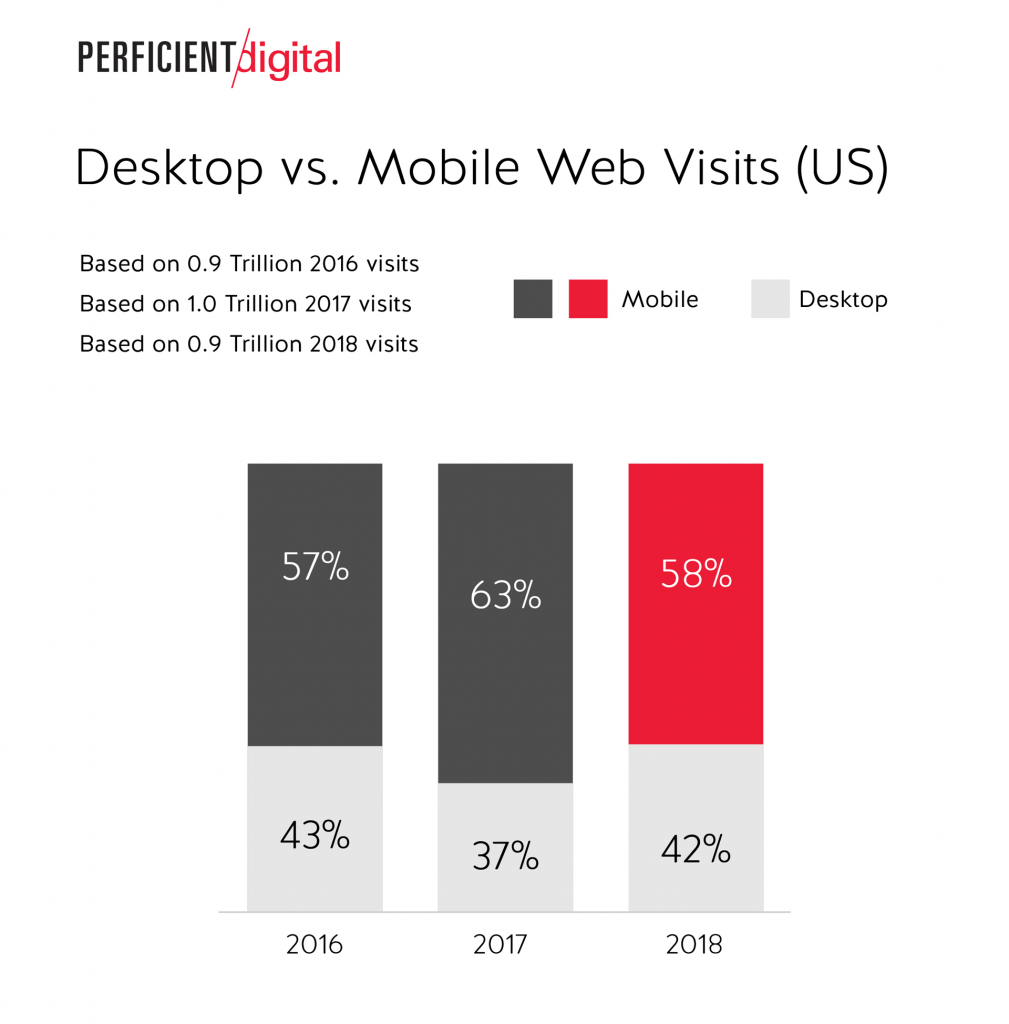
However, the data doesn’t mean that the mobile shopping experience is the largest cup of tea for customers. The record notes that the mobile web bounce rate in the US reaches 67.4%, quite doubles the desktop web bounce rate at 32.6% (2018). Accepting that people hold the need to look something up quickly while they’re on the go, users actually get more comfortable with the desktop browsing experience.
Fortunately, grasping such a market trend, the mobile site experience is being improved. As a result, the mobile bounce rate is recently backed up a bit: the figure in 2018 is slightly lower than it was in 2016.
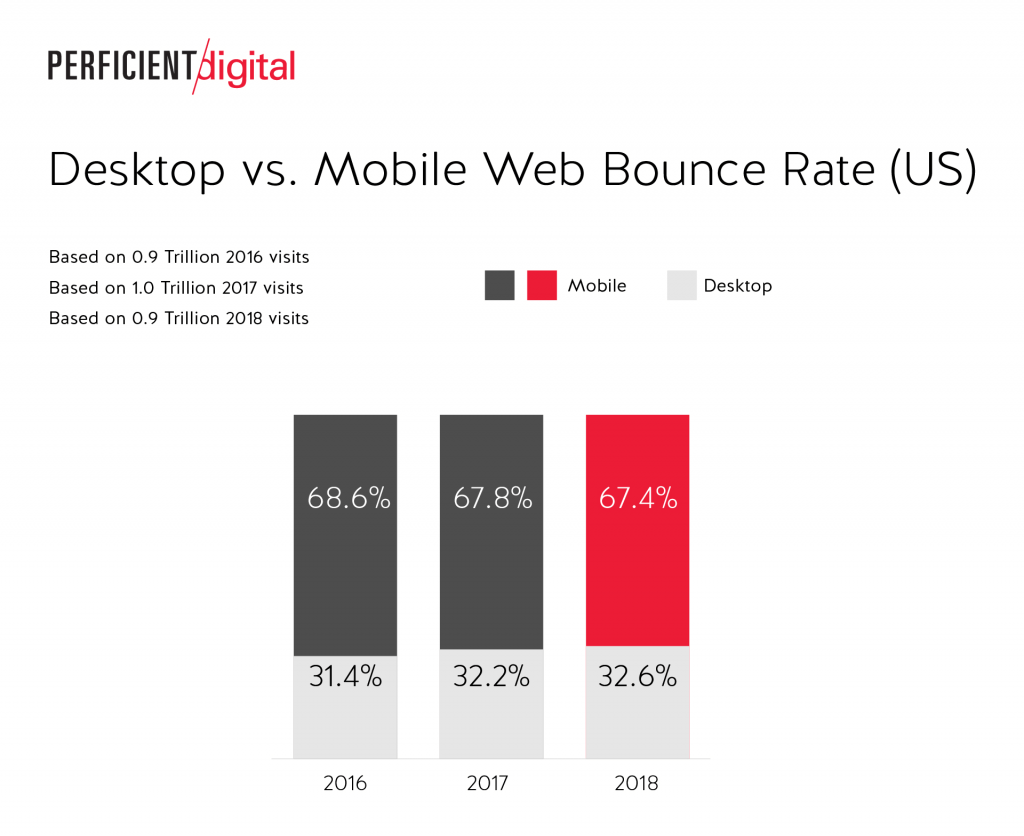
In summary, mobile user interfaces are enhancing, and users are getting more accustomed to them. Hence, mobile-friendly performance is pretty important in all industries, especially those which run online, because mobile is the largest source of traffic in nearly all of them.
What to know about PWA?
PWA – the dream of an app-like browsing experience comes true
What is PWA? In simple, PWA = web app + native app.
Web apps are not real applications. Actually, they are really websites that look like native apps. They run on the browser and can be accessed by navigating to certain URLs. Users can save the web apps for further convenience by bookmarking them on the browser.
Native apps live on a device and can be accessed through an icon on the device’s home screen. They are developed especially for certain mobile platforms (Android, iOS, Windows). They are installed through an application store (Google Play, Apple’s App Store).
PWA is a term to illustrate a new web development technology. It encompasses modern web technologies to deliver an app-like experience to the users right on their browsers.
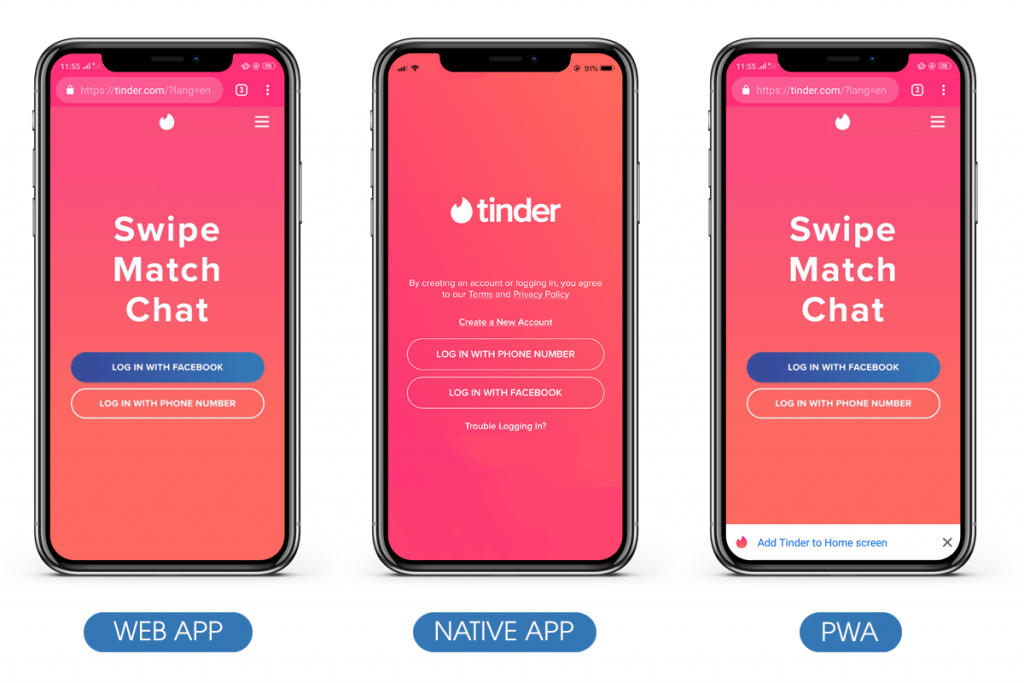
PWA completes the two others’ limitation

Native apps can take full advantage of device features over web apps: camera, GPS, contact list,… But, is it wise to use native apps? Unfortunately, more than 50% of buyers are not willing to download mobile apps from the app store. The case is only possible for a small number of customers who have frequent purchases. Otherwise, customers prefer visiting traditional websites to make an order.
Overall, PWA can cure all web apps, and native apps matter. It combines features offered by the most modern browser with the benefits of the mobile experience.
Check out more detail about the difference between PWA vs Native Apps now!
How PWA works?
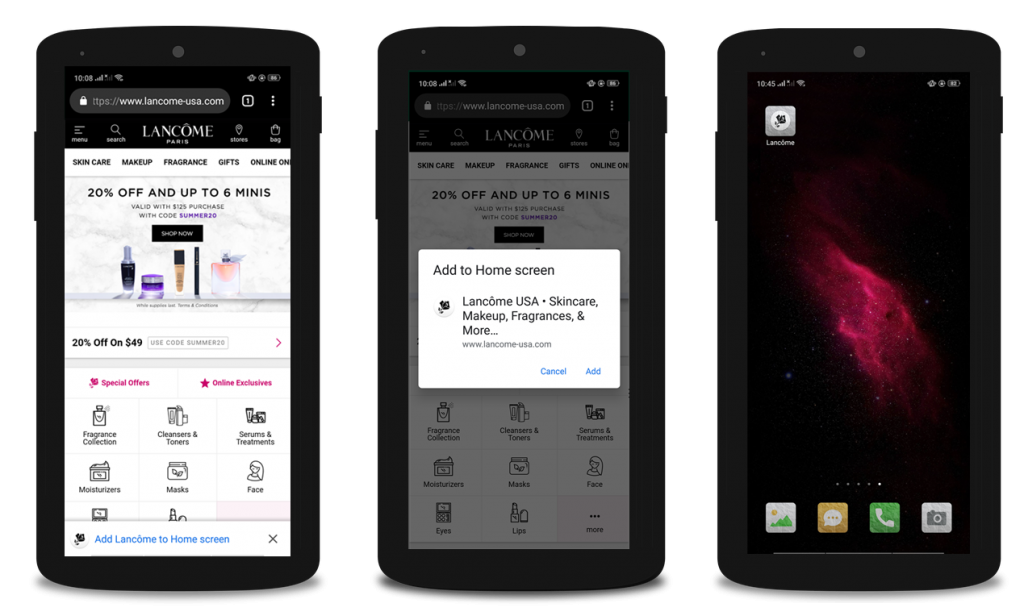
The workflow of PWA is pretty time-saving and simple to understand:
- First, customers normally visit a website via the browser on their devices.
- Immediately, they get the prompt if they would like to “Add to Home Screen”.
- Only 2-3 seconds after users give the thumbs up to this prompt, BOOM! PWA is already present on their phones through a small icon.
- Users can access PWA anytime without the Internet. They also just have to refresh the page to get the latest version of PWA.
Just make a quick look at the showcase of Magento 2.3 PWA Studio on a test drive to understand its power:
Service Worker – The heart of PWA
What is Service Worker?
Service Worker is a Javascript file that runs in the background of the browser, totally separate from the web page. It has the right to interfere in the request-response from the browser. It can also open the door to features without a web page or user interaction.
In simple words, we can understand this script as something independent and powerful: It stands behind a house but knows everything inside.
How Service Worker give PWA the power to form its USP?
One of the most impressive USPs (Unique Selling Points) of PWA is the ability to work offline. The service Worker is exactly the person standing behind to make this work: It saves data/resources to Cache/DB Local, which helps PWA to respond to user interaction both in stable and poor network conditions.
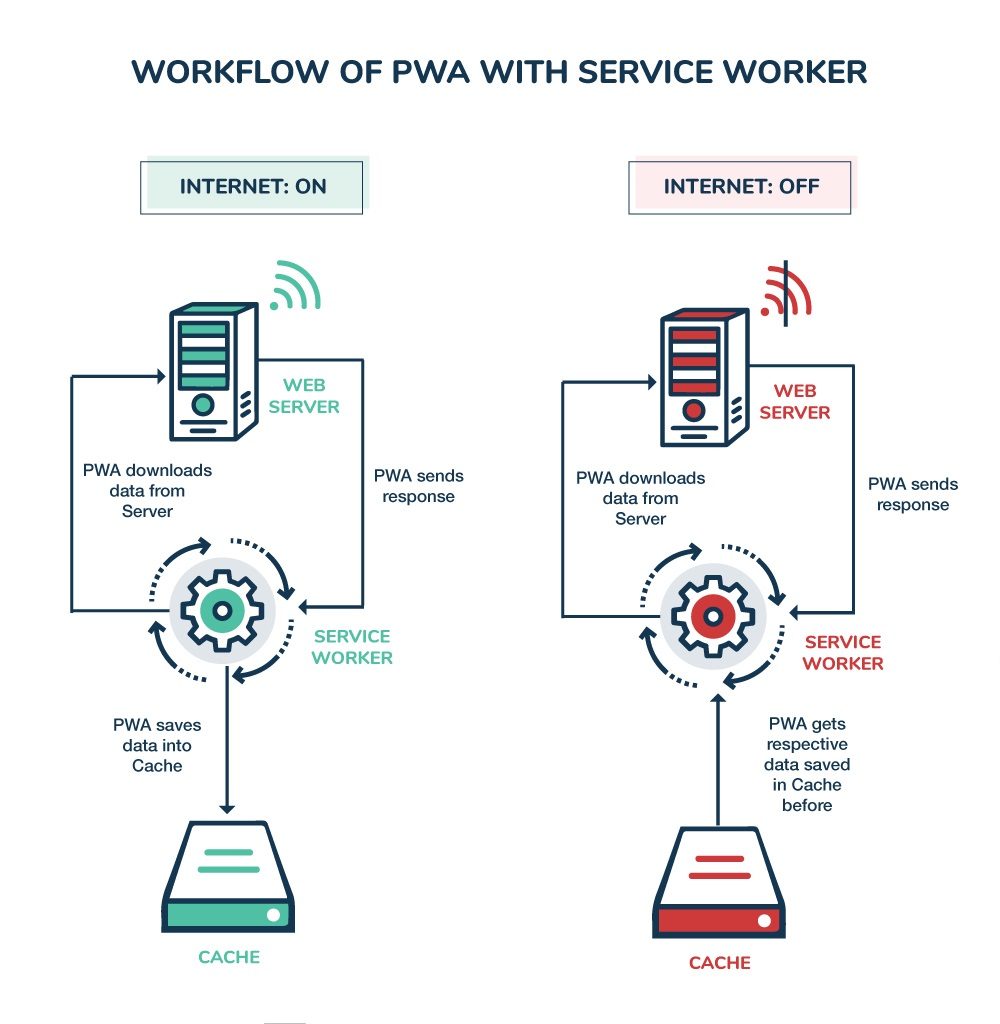
Why PWA is the future of mobile shopping?
Just make a quick look at multiple outstanding features of PWA:
- Instant loading, smooth scrolling, quick response
- Push notification, full-screen display
- Add to the home screen within a few seconds
- Easily access even under offline mode
- Immediately update the latest version by refreshing the page
Rethinking the mobile experience, retailers should consider exploring PWA to effectively drive conversions and revenue. And such detailed features above are enough to prove how PWA plays as part of a broader engagement strategy:
- 1: Engage huge traffic – Increase in the number of users
- 2: Optimize UX – Seamless work on mobile devices
- 3: Reduce cart abandon – Reduction in application weight
- 4: Rocket revenue – Get the conversion rate growth
Numbers don’t lie: Renowned brands have succeeded with PWA
A lot of eCommerce growth has been witnessed thanks to their PWA application, not in the traffic only but the conversion also.
Alibaba, one of the world’s largest e-business, has seen a 76% increase in conversions across browsers.
Luxsmart, a large retailer, doubled its conversion rate from 0.6% to 1.24%. Besides, according to Google PageSpeed Insights, Luxsmart’s performance leaped from 67% to 99% after PWA was deployed.
Flipkart, the largest eCommerce based in India, sees the interaction rate rising by 20% and conversion rate rising by 70%.
Jumia Travel, focusing on offering travel services to the African market, reduces mobile bounce rate by 50% and increases the conversion rate by 30%.
Read these Outstanding PWA projects of hugh brands to clearly understand the benefits of PWA.
Afterwords
eCommerce always transforms to satisfy customers’ changing demands. Renew to grow or be left behind – it’s up to you! Mobile shopping is regarded as a potential chance to quickly grab customers and sales. Therefore, Magento 2 PWA is such a powerful technology that you should try.
In fact, Magento 2 PWA has successfully developed. The best way to boost its progression is to embrace PWA and give developers your valuable feedback.
Wanna have your own one? Visit Magento PWA Development to connect with out experts.

